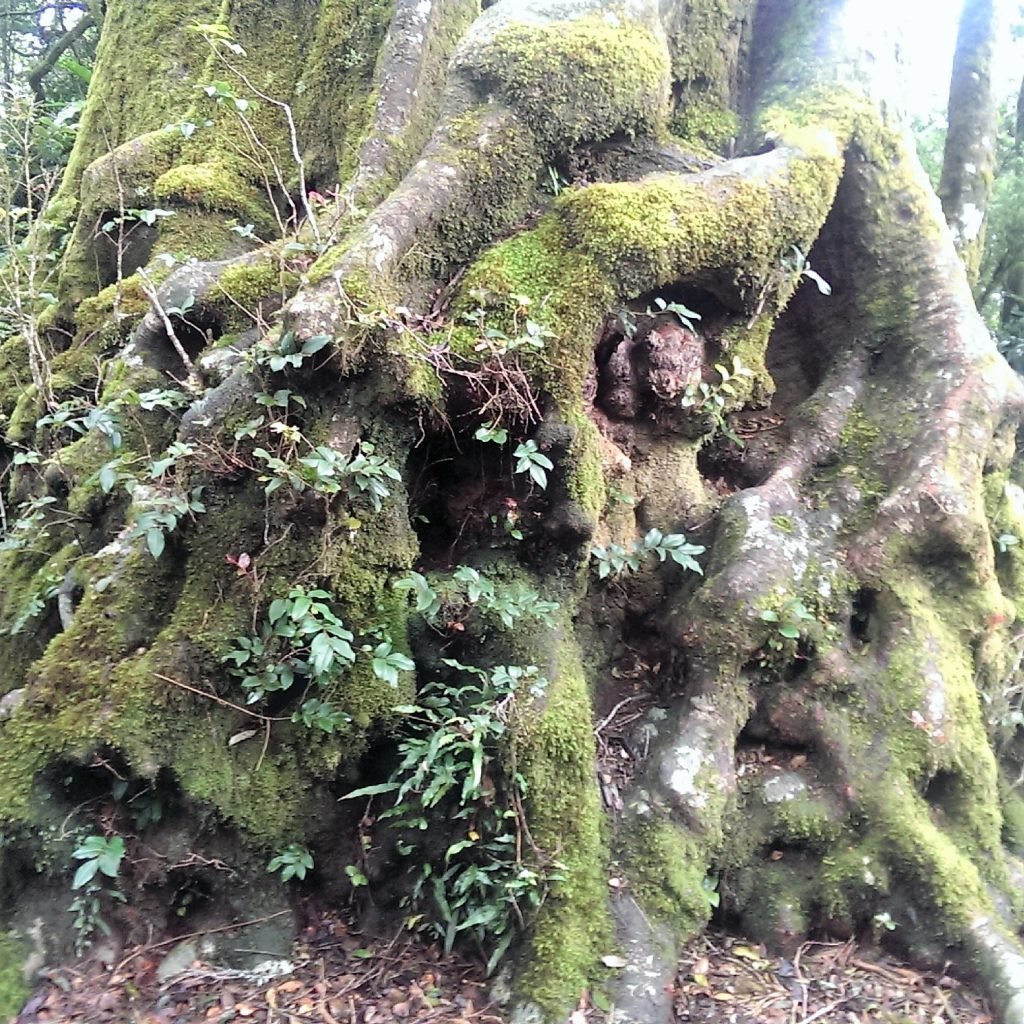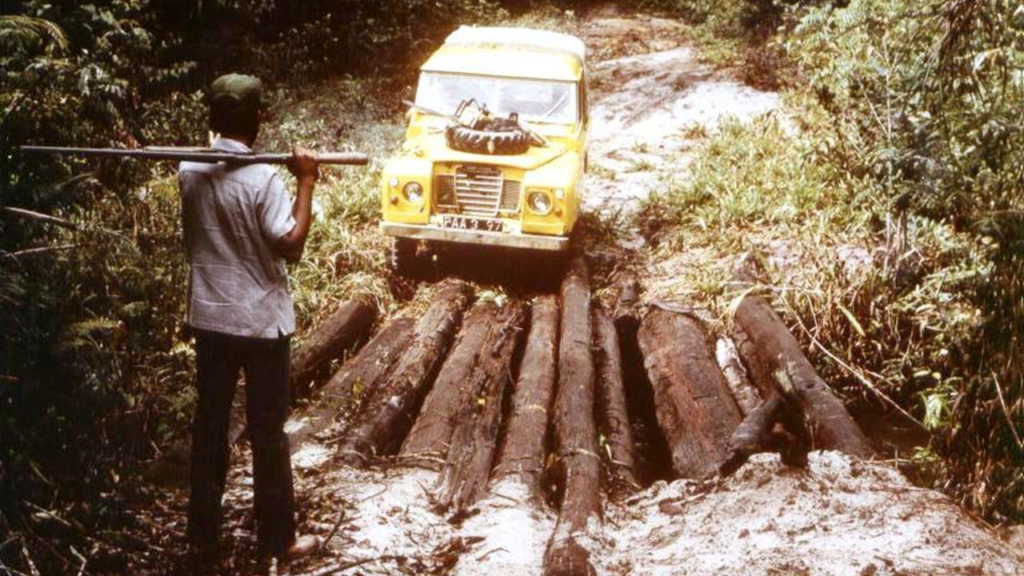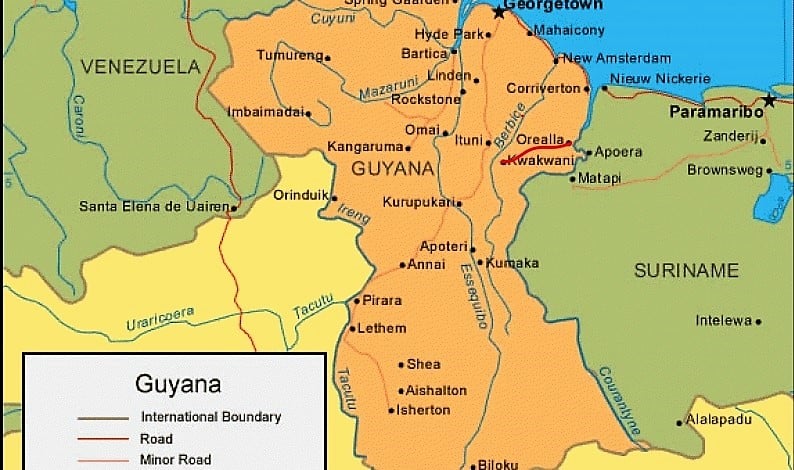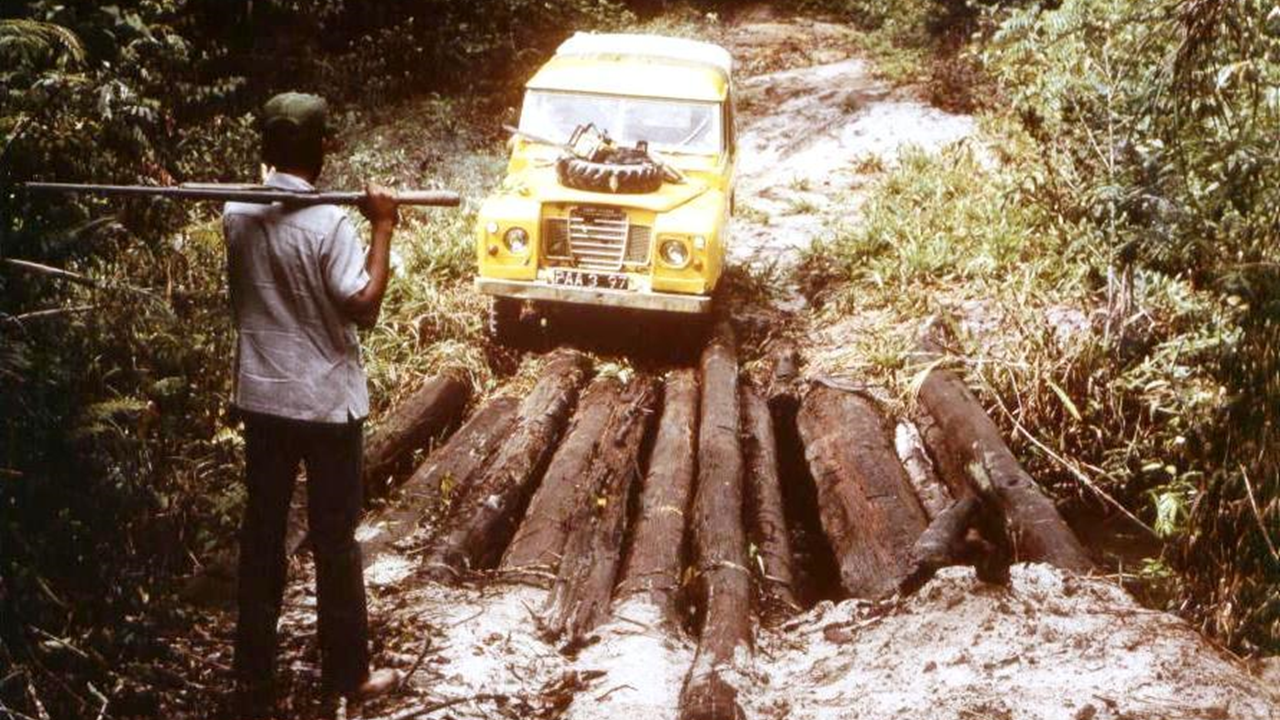I love the bush and I loved hunting. So, every alternate weekend Peter Ramsingh and I would go on a long drive into the bush to hunt what we could. Most of this was for the table because in the Kwakwani of those days, if you wanted variety on your table you had to find it yourself. The Commissary (company owned department store) was no help in adding variety to the table either. My cook and housekeeper, Naomi, was a gem of a woman, very large, very bossy and with a heart of gold. She was from St. Lucia and took it as her bounden duty to fatten me up. But no matter how many delicious meals she cooked, I refused to get fat. Naomi appreciated getting fresh fish and bush meat to cook. I never asked her to account for what I gave her which suited us both very well. The last thing I wanted to do was to count pennies and eggs and if she took something for her family, she was most welcome. Naomi took care of my house, cleaning, washing clothes, ironing, and cooking. Everything inside the house. I took care of my pets, poultry, and what garden there was. My hunting and fishing therefore had other beneficiaries.
We hunted mostly birds; the Canje Pheasant found all along the Berbice and its tributary, the Canje Creek. Another common game bird was the Powis (Curassow). It was as big as a turkey and good eating. We would also on occasion get an Agouti (Brazilian Agouti or Red, Orange or Golden Rumped Agouti) or two. And when we were lucky, a small Savannah deer. Bush pig, the Collared Peccary (called Javelina) was also good game and though we both did not eat it, we had many friends who welcomed our hunts because we were the only people who would shoot a pig and then give it away. I never shot a Tapir or Jaguar or Puma. I never even saw a Jaguar or Puma in all the years I lived in Kwakwani, which is strange, because there are many in those forests. But given the nature of the forest, it is understandable.
Peter inherited my yellow Land Rover when the sawmill started, and I got a small Toyota pickup. Peter and I would take turns driving the Land Rover over the bush trails. The Land Rover contained in the back, everything that we needed for our camping or emergencies. A chainsaw, thick rope, hammocks, some fishing net and lines and hooks, jerrycans with spare petrol, an axe, a spade, the ever-present cutlasses (machetes), and various odds and ends. Each of us carried a 16-gauge shotgun. We would load up a cooler filled with drinks and some pre-cooked bananas or cassava and off we would go. What would have been ideal was a cell phone or radio but the first hadn’t been invented and the second we didn’t have. So, we relied on ourselves. What we shot, we would cook in the bush and eat. What we saved; we would bring home. Sometimes in the bush we would come across a stream flowing at the bottom of a deep ravine and would have to build a bridge to get across it. At other times we would get stuck in the sandy soil and if piling freshly cut leaves and branches under the wheels didn’t work, we would tie the rope to a nearby tree and use the winch on the Land Rover to haul it out. In the evening we would find a camping place, sling our hammocks between ever present trees, all conveniently located so that we could tie our hammocks of course. Then we would light a fire and put on the tea pot. Once we had a nice cup of tea sweetened with condensed milk, we would put on the cooking pot. Peter, meanwhile, would have cleaned the game of the day. We would get water from the stream nearby, water that was coffee colored but perfectly clean and tasteless. The color was due to the dyes that leach into the water from the roots of trees that trail their feet in the stream. I have no idea what those dyes did, but they didn’t seem to have any detrimental effect and we drank that water straight from the stream all the time we were in the bush, with no ill effects. The bush meat would go into the pot with salt and chillies, some onions, and as it cooked, we would sit and talk about life.
Sunsets are different in Guyana where you are almost on the equator so there is no twilight. If you are in the Savannah, one minute you see a flaming globe that colors the whole sky anything from a deep orange to blood red and the horizon looks as if the whole world is on fire. Then there is sudden darkness. If you are on a trail in the forest or on the river, you will find yourself in darkness but if you look up at the tops of the trees, you will see bright sunlight, lighting them up. Treetops look like they are on fire and remain that way a long time after darkness has fallen on you. Travel needs to be planned therefore so that you don’t blunder into a ravine or into something harmful in the dark. As soon as the sun starts to go down, you need to be in your camp with a fire to start your night. Nights tend to be long as there is nothing to do apart from talking to your companions in the firelight, which can be very pleasant depending on the quality the company, you and your companions. The fire casts strange shadows because of the ‘floor level’ lighting, illuminating some parts of your face while making others dark. The dancing flames constantly change the pattern of shadows which is fascinating to watch. But looking into a fire, though it is instinctive, destroys your night sight, so when you look away from it, you are totally blind for a while until your eyes adjust to the darkness. For this reason when you are in the bush and sitting at your fire, it is better not to look directly at it.
The bush in South America is different from its counterpart in India or Africa and in my view less dangerous because of the absence of major predators and large herbivores like rhino, elephant, and hippo. The only big ones are the Jaguar and the Anaconda, but neither will attack a person except in special circumstances. So, it is possible to sleep very peacefully if you are not on the ground.
An hour or so later, once the food was ready, we would take the pot off the fire, pull out the bread that we had brought, and have our dinner. Then after some more discussion of world affairs, we would climb into our hammocks and drift off into peaceful sleep looking at the stars—possible only when we were camped at the riverbank where the canopy did not obstruct the view. Those days seem like a dream today. Almost as if they never happened. And Guyana is so far away from where I am today that it seems as if I will never see my friends again. Be that as it may, the memories are alive in my heart and on these pages; they will live on in the minds of those who read this. We live in the memories that we give others. So, it is important to be conscious of the memories we leave behind. This doesn’t mean that we live our life for others. But it does mean that we remember one cardinal fact, ‘Everything we choose to do or choose not to do, reflects brand value and character and is the stuff of memories.’
Remember when you read these pages that if I have written about a stream, it is there, and the water is good to drink. These are stories of real life, real people, their hopes and loves and fears. And they will live on until they are remembered.
The Berbice River was the lifeline of the forest. If you lived in Kwakwani, no matter where you went in the bush, you were never far from the river. The rain-forest was so thick and difficult to traverse that the preferred mode of transportation was by boat on the river. In our case, when we were driving on the Savannah, we were away from the main river, but every so often we would cross its tributaries, some flowing and some waiting for the rains to flow. Camping near their banks was a risk because what was a dry, sandy stream bed could become a raging torrent in minutes. If that happened in the middle of the night when you were fast asleep in your tent, you could end up losing all your possessions and worse. We ensured that we always camped on the other side of whichever stream we needed to cross and high up above its bank. We would take water from it, bathe in it and enjoy that, but we would sleep away from it.
The water of the Berbice River changed complexion throughout the day. Early in the morning it has, what looks like steam rising from it. So, you would be floating through this cloud of vapor looking ethereal and ghostly. As the sun rose and it got hotter – we were sitting close to the equator, remember – the mist would disappear, and you would see the colors of the trees reflecting in the river. If we were planning to stay another day, we would spend a couple of hours walking in the forest, following some track or the other simply to enjoy the experience of being in the rain forest. We were not hunting seriously and only the unwary animal with suicidal tendencies achieved its objective at our hands. We were more interested in watching Hummingbirds flit from flower to flower looking like moths more than like birds. Hummingbirds beat their wings so fast that you can’t see them, and they are the only birds that can fly backwards. They fly up to a flower and hovering before it on buzzing wings, insert their specialized beaks deep into it for the nectar, then fly backwards to get out of that flower and go to another one. For those who like details, the wingbeat of Hummingbirds varies from 15 – 90 beats per second. Yes, per second.
Mornings are announced by the booming call of the Howler Monkey answered by his cousins everywhere and so for a while there would be cacophony in the forest. Macaws taking off for their daily commute would also be talking to each other and you would hear their calls. Toucans would call to each other as they hunted for fruit in the tops of giant figs. You would hear the crash of branches as Sakiwinki (Spider Monkeys) took off on their highway a hundred feet in the air, throwing themselves from one forest giant to another with gay abandon. They would be followed by others, heavier than them and the branches would crash more loudly. Ah! The difficulty is in trying to describe what the eye sees, what the ears hear and what the heart feels in mere words on paper. It is the whole atmosphere of the forest when you become one with it, when time has no meaning and the daily grind and work pressure feel like a bad dream that you woke up from.
In Guyana I never heard the term ‘rain-forest’. People used ‘backdam’ or just ‘bush’. Even ‘forest’ was not used, though we lived in the middle of it. These lands were not truly uncharted because people, mostly Amerindian hunters, and loggers, had long gone along the trails that we drove on. I have no idea who made these trails originally, but they were ideal for Peter’s yellow Land Rover. Peter had a great sense of direction, so we always got back safely two days later even though I had no clue where we were going or had been. I would just concentrate on the driving or on watching out for game. Hunting in the rain forest is very tough because though it is teeming with wildlife, the forest is so thick that you can’t see more than a couple of feet on either side of the trail. While driving you had to concentrate on the trail, watch for tracks and when you did see something, be quick and accurate if you wanted to eat. If you walked through the forest in search of game, you must be prepared to become very sweaty and hot and get bitten by a zillion mosquitos and other insects who considered you manna from heaven. The forest extracts its price in sweat and blood for what it delivers up to you.

The canopy was so thick that more often than not we would be driving in semi-darkness. But that didn’t mean that it was cool. It was more like a sauna with very high humidity and almost no breeze. Sometime if you got lucky you came into a forest clearing where you would feel the breeze as the jungle was open enough to allow for airflow. That must be one of the most pleasant experiences of mankind – the feel of the cool breeze on hot sweaty skin. The thick cover resembling a green ocean as you fly over it in a small plane, is very deceptive in that the trees have very shallow roots. Most rain-forest soil is extremely poor and sandy with all the nutrients largely remaining at surface level and thus getting washed off or leached out of the soil thanks to the heavy rainfall. Because of this rain-forest trees have very shallow roots. Some trees have developed ways of obtaining much needed additional support by forming buttressed roots, which grow out from the base of the trunk sometimes as high as 15 feet above the ground. These extended roots also increase the area over which nutrients can be absorbed from the soil. The forest floor is carpeted thickly with leaves on which grow mosses and lichens. Roots of trees take from this thick carpet and go very little into the earth. The soil beneath this thick cover of leaf mold is sandy and loose. As the trees grow, they literally hold up one another with their intertwined branches and the many creepers and vines which climb up the trunk of one giant and across the canopy of another also add support. Roots intertwine on the ground surface and below it. It is a huge network which communicates across vast distances.
A clearing is created usually when one of these giant trees falls, either the result of logging or when with age and disease it succumbs to the wind. When that happens it usually takes down a few others with it and an opening is created in the thick canopy of the forest. The unprotected soil gets quickly washed off its nutrients with the almost daily rainfall and is taken over by grasses and other secondary growth. A piece of rain forest is thereby lost forever. This is the problem with the slash and burn agriculture so common in these parts as well as with the indiscriminate logging that takes place everywhere. For every tree that is harvested, there is a huge swathe of forest that is laid bare, never to regenerate; gone forever. The rain-forest is a very fragile and delicate ecosystem, easily destroyed and impossible to repair. One may argue that given time, forest regenerates and that is true. The problem is the amount of time that takes and what emerges at the end of that period. What is lost is almost never regained as it was.
Forest clearings, however, are good for hunters because herbivores come to eat the new grass and where trees have been burned, to eat the ash, and if you sit quietly just inside the forest bordering the clearing, you can usually get a clear shot. Clearings are also where you can get a breath of air as there is space for airflow and so if you have been walking in the rain-forest you welcome a clearing when you come to it. As I mentioned earlier, walking in the rain-forest is a very hot and sweaty affair and any breath of air is welcome.
Driving on the forest tracks also threw up a unique challenge, which when it happened for the first time, was very shocking for me. We came around a bend and without warning Peter stopped the Land Rover. Right ahead was a deep gully about 20 feet across at the bottom of which flowed a stream. Land Rovers, for all their excellent qualities, can’t jump or fly. So, what do we do? Peter was having a laugh at my expense; I could see that. He got out and stretched and then said, “All right! We gaffa build a bridge.”
Build a bridge? This I had to see. Peter took out the chain saw, and we went hunting for trees of the right thickness. We wanted something with a straight trunk and thick enough to have the strength not to snap with the weight of the vehicle. We needed eight logs: four for each wheel track. Once we had cut the eight trees, we trimmed the branches off with our machetes and cut the trunks to size ensuring that we had a good length on either side of the gully. Then we laid the first set of four logs across the stream, standing each one up and dropping it across and then fixed them together by hammering in thick wooden pegs on either side so that they would not slide apart when the Land Rover wheel ran on them. Then we went across the little bridge and pegged it on the other side in the same way. Once we had one track in place, we drove the Land Rover up to the track to get an idea of how far apart the other track needed to be and repeated our bridge building. Then I went across to direct Peter over the bridge and he drove across. Took us about an hour of sweaty work, but then we were off on our journey once again. Bridge building is a particularly important activity and the main reason why anyone driving in the bush would always carry a chain saw or axe and machete. If you couldn’t build a bridge you would have to turn back because thanks to the thick forest on either side of the road, there was no way of going around the gully. Another important survival lesson I learnt is that whenever you come to a bridge, you always stop and carefully inspect it to ensure that it was strong enough. Green wood doesn’t last too long in the rain-forest and a bridge built a few weeks earlier can be seriously damaged by insects such that if you drove across it without checking you’d most likely find yourself in the gully headfirst. So, we always inspected each bridge and when necessary strengthened it by cutting new logs and replacing any doubtful ones.

One day Peter and I decided to drive to the Corentyne River on the Orealla Trail. Orealla is small Amerindian village on the Corentyne River, overlooking Suriname. It is a lively and friendly place and we intended to drive there, spend a night, look at Suriname across the river and return to Kwakwani. The trail itself, if you walked would take about three days but since we were driving, we didn’t expect to take more than the day. What we did not bargain for was the condition of the road. For one thing, we had to build bridges in two places and that took a couple of hours out of our schedule. Then we came to a place where the road was deeply dug up by timber trucks so that the two tracks were more than two feet deep with a high central ridge. If we drove the Land Rover into those tracks, the central ridge would hit the oil sump and either smash it or jack up the car with the wheels spinning uselessly in the air. Peter came up with a solution. He put the Land Rover in 4×4 drive and rode one wheel on the center median ridge. The vehicle tilted and tipped over to one side and the roof of the cab rested on the high side of earth bank that bordered the road. The two wheels on the opposite side were up in the air. Slowly the vehicle moved, with two wheels in the rut, two occasionally touching the median and the cabin roof sliding along the earthen bank. I can tell you that it didn’t do much good to the cabin but then that Land Rover was already so beaten up that it didn’t matter. In any case the soil was so soft and sandy that it did not do any permanent damage. At the end of the track, I stood on the runner which was in the air to tilt the vehicle back onto all four wheels and off we went on the trail.
As always, our rule of eating what we shot was maintained and I shot a couple of Curassows and at midday we decided to take a break and cook our lunch. I made the fire and prepared the camp while Peter cleaned the birds. As always, first the tea, then the rest. By the time, the tea was ready, the birds were also ready for the pot and while we drank tea the birds cooked. Then we both had hot Curassow stew with potatoes and red pepper, with bread which we had brought. A good lunch, an hour of siesta and then off again to Orealla.
We reached Orealla late in the evening and found a place to stay. There was a guest house, and we took a room. Then we went out to get something to eat and ate some very fine fresh Corentyne fish curry and bread. The waterfront was like all Guyanese water fronts, with very noisy bars which got noisier as the night progressed and people’s spiritual levels increased. Mercifully, there was no violence the night we were there, but tempers tend to run short when people are operating on alcohol fumes and it is a matter of an instant for a bottle to be smashed on the edge of a table and then used to carve up the opponent in the argument. Dominos, as always, seemed to be popular with the people – probably because of its amazing noise making potential – slamming the dominos on the table with great force accompanied by a huge shout. Peter and I walked to the bank of the river and watched the lights across in Suriname for a while. It would have been illegal for us to cross over as we didn’t have visas. In any case this place was famous for smuggling and so it was not safe to be caught on the river in a small boat at night by the Surinamese and Guyanese patrol boats which cruised the waters.


Well written and I am a fan of your stories. The only thing you didn’t carry, as it wasn’t invented then, was a camera which could record videos!
You certainly made good use of your time in Guyana, getting around the countryside, fishing and shooting for the pot.
Alastair rarely left east coast Demerara, but did however play rugby, football and soccer for B.G. Came to fishing later when I worked in India.